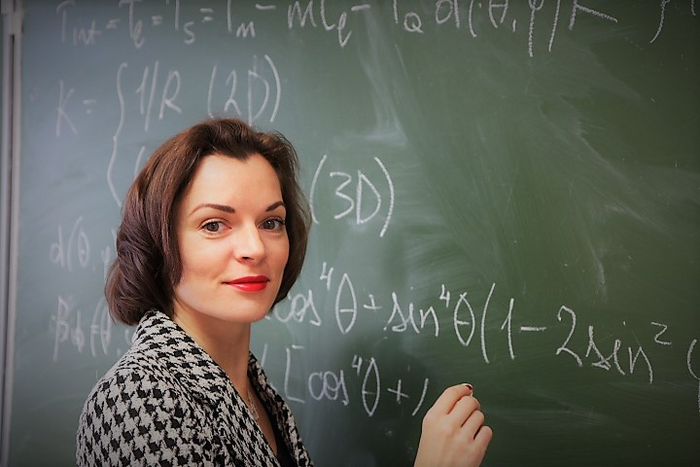Reviewed by Alex SmithJul 28 2022
At the Ural Federal University (UrFU), a new law has been determined by physicists that accounts for the anomalous behavior of melts.
 According to Lyubov Toropova, scientists are able to theoretically explain the anomalies of the alloys. Image Credit: Pavel Varankin/Ural Federal University.
According to Lyubov Toropova, scientists are able to theoretically explain the anomalies of the alloys. Image Credit: Pavel Varankin/Ural Federal University.
By making use of a mathematical model, researchers have described such deviations, whose causes were yet to be understood properly earlier. This, in return, will help make a new generation of materials that melt with given properties. The description of the model has been reported in the Scientific Reports journal.
It used to be assumed that the rate of solidification of melts increased with increasing temperature. However, this is not always true. In some cases, for example due to impurities or alloy features, abnormal behavior can be observed.
Lyubov Toropova, Senior Researcher, Laboratory of Mathematical Modeling of Physical and Chemical Processes, Ural Federal University
Toropova added, “We have succeeded in explaining this phenomenon. We came to the conclusion that it is necessary to take into account the nucleation of crystals inside the two-phase zone, which reduces the supercooling of the melt, makes this layer narrower, and slows down the speed of the crystallization front. We have deduced a law that takes into account such anomalous behavior.”
Physicists have observed that this anomalous behavior is a result of nucleation: the rate of solidification drops while crystals are nucleated and start to grow in cases where crystals have nucleated and are on the rise to growing.
The new model was tested on the aluminum–nickel alloy. A range of experiments were carried out by German collaborators in the laboratory utilizing an electromagnetic levitator and onboard an aerospace station at the Cologne Science Center. The data verified the theoretical calculations.
Our model takes into account the movement of the interface between the solid and liquid phases, taking into account the nucleation and growth of crystals. No one has done this before.
Dmitry Alexandrov, Leading Researcher, Laboratory of Multi-Scale Mathematical Modeling, Ural Federal University
Alexandrov added, “The calculations are universal and will be useful for specialists in the aerospace industry, for obtaining materials with specified properties, for predicting the properties of alloys, for forming new high-strength structures applicable in new generations of materials.”
Note
At the Ural Federal University, physicists have come up with a theory of the motion of the solid–liquid phase boundary in supercooled melt in the crystal growth and existence of nucleation.
The researchers analytically resolved a system of integrodifferential equations of kinetics, mass, and heat transfer in the two-phase and liquid layers isolated by a movable phase transition boundary.
For this, they utilized the burden point technique to assess the Laplace-type integral and the small parameter method to determine the law of motion of the interface.
Consequently, they discovered that the processes of crystal growth and nucleation are accountable for the release of latent heat of crystallization. This helps decrease the supercooling of the melt and straits the thickness of the two-phase layer.
For over 130 years, the dynamics of circulation of crystallization fronts have gained a lot of attention from around the world. This starts with Stefan’s work on freezing water with a flat front.
Today his name is borne by problems with a moving boundary that separates different phases of the aggregate state of matter. A range of nonlinear dynamics of interfacial boundaries is of interest in applied mathematics, materials science, nonlinear physics, geophysics, and mass and heat transfer.
Journal Reference:
Toropova, L V & Alexandrov, D V (2022) Dynamical law of the phase interface motion in the presence of crystals nucleation. Scientific Reports. doi.org/10.1038/s41598-022-15137-2.